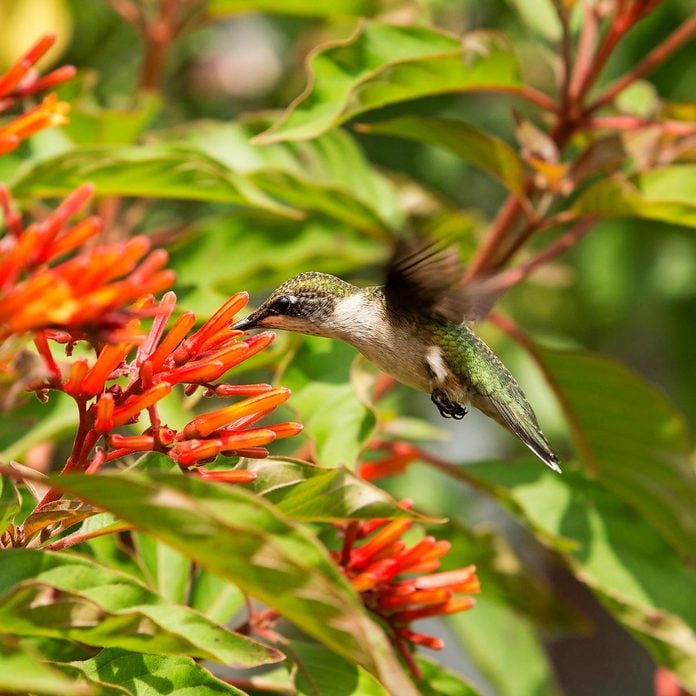
They come back home
If you think the same hummingbirds come to your feeders and flowers every year, you might be right! Banding research shows they are likely to return to the area where they hatched.
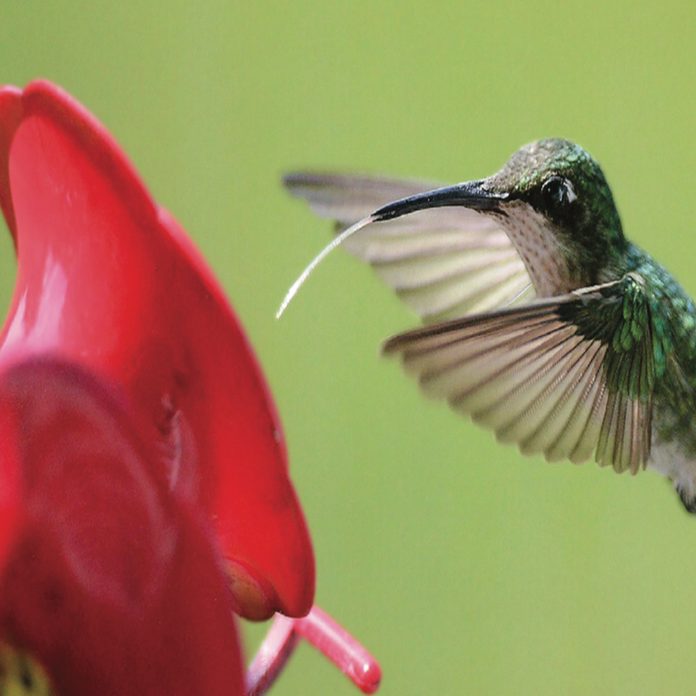
They have long tongues
A hummingbird uses its tongue, which functions as a tiny pump, to suck the sought-after sweet liquid from feeders and flowers. Plus: Check out 9 expert tips for attracting hummingbirds to your backyard.
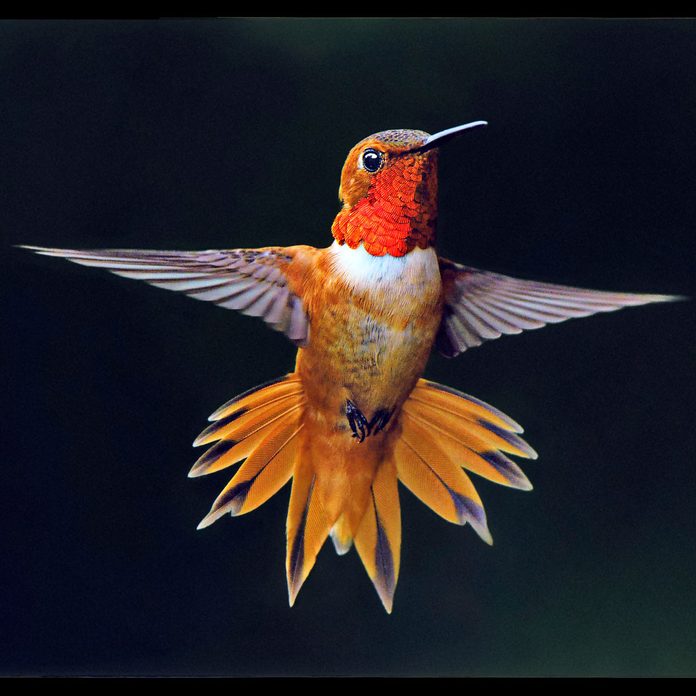
They travel far
Rufous hummingbirds migrate farther than any other North American species. They travel 4,000 miles from Mexico to Alaska every Spring.
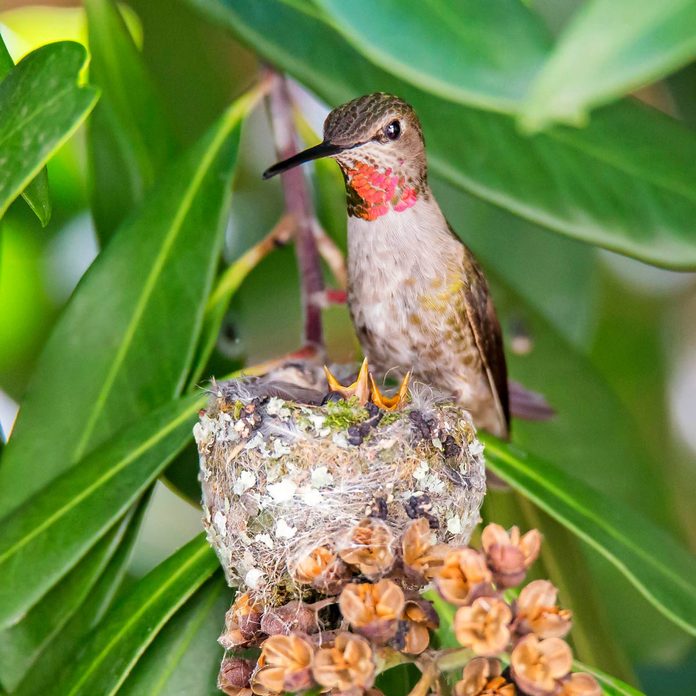
Their homes are tiny
The average nest is about the size of a half-dollar coin. The eggs inside the tiny structure look like mini white jelly beans.
In this article, learn why the Rufous hummingbird is the toughest bird on the block.
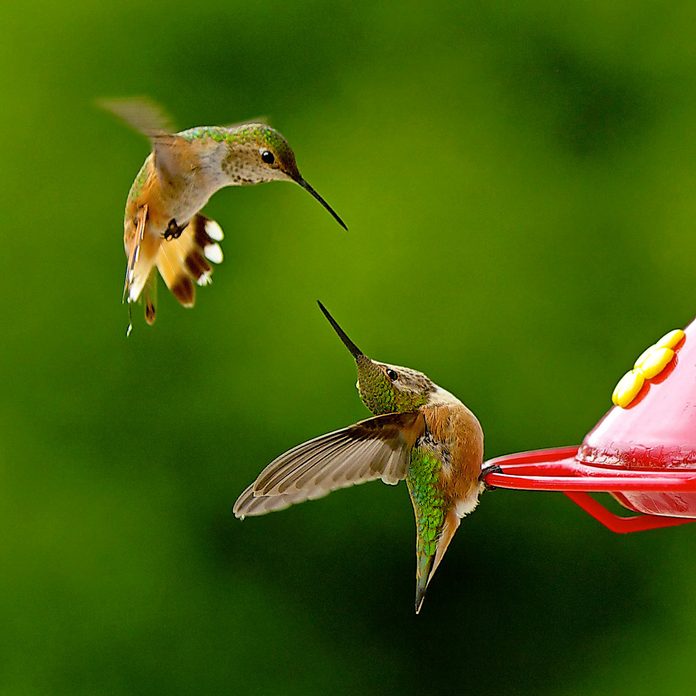
They are small but mighty
Hummingbirds can be very territorial and will try to protect their food sources: both flowers and feeders. They spend a lot of time chasing other birds away.
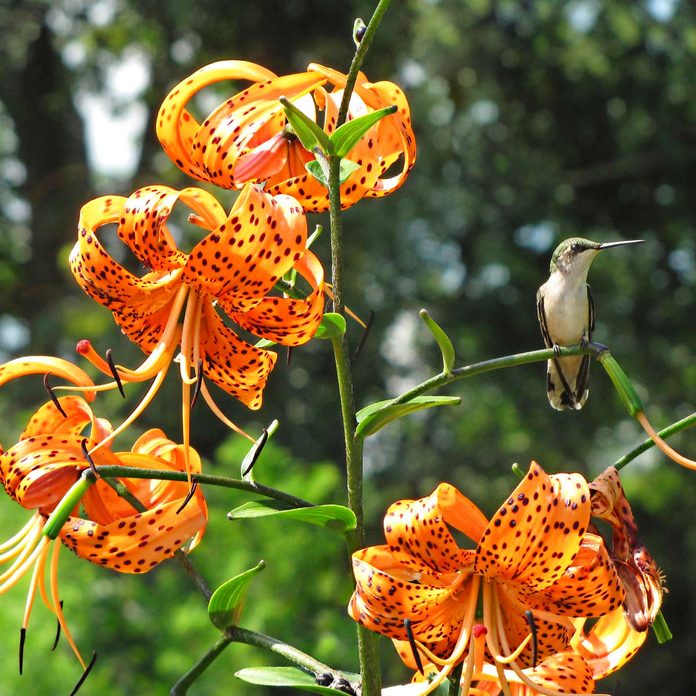
They do everything fast
While resting, the average 4-inch hummingbird takes about 150 breaths per minute. Hummingbirds love this plant, too.
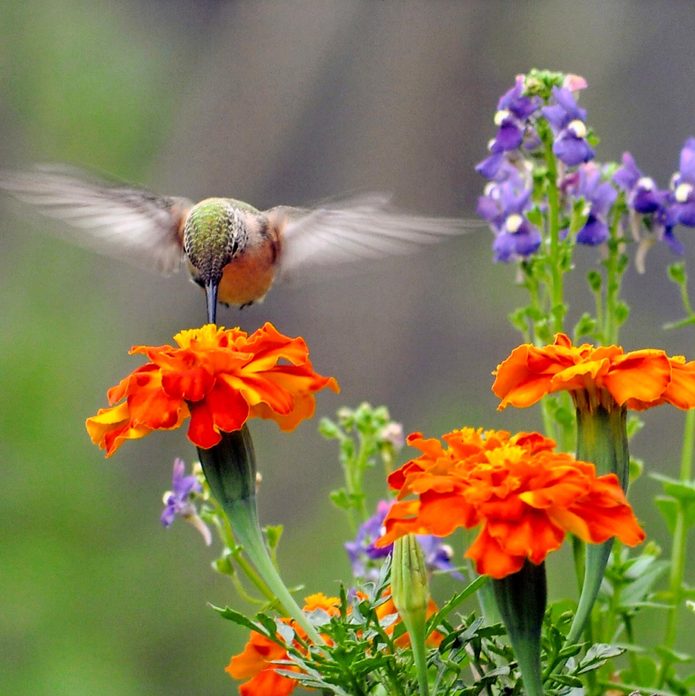
They can fly backwards
They can hover in midair at flowers and feeders, and they’re the only birds that can fly backward. Their wings move in a figure-eight pattern, which allows them to maneuver with ease.
Next, check out this article: 14 Amazing Hummingbird Feeders for Your Backyard.
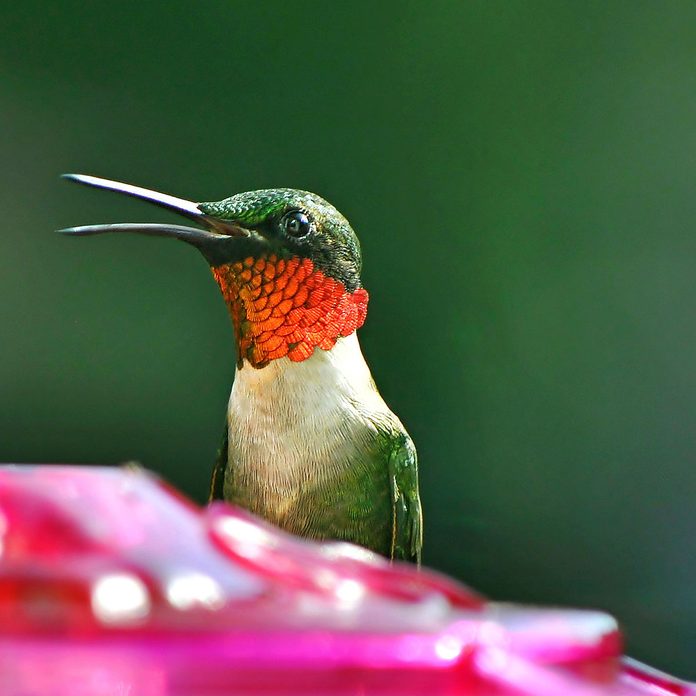
They can sing, too
Some species, specifically male Anna’s and Costa’s, are regular singers. With other species, the most common sounds are aggressive calls, which resemble chattering or squealing. You’ll hear them when several hummingbirds are gathered near a food source. Did you know that this is what a hummingbird home looks like?
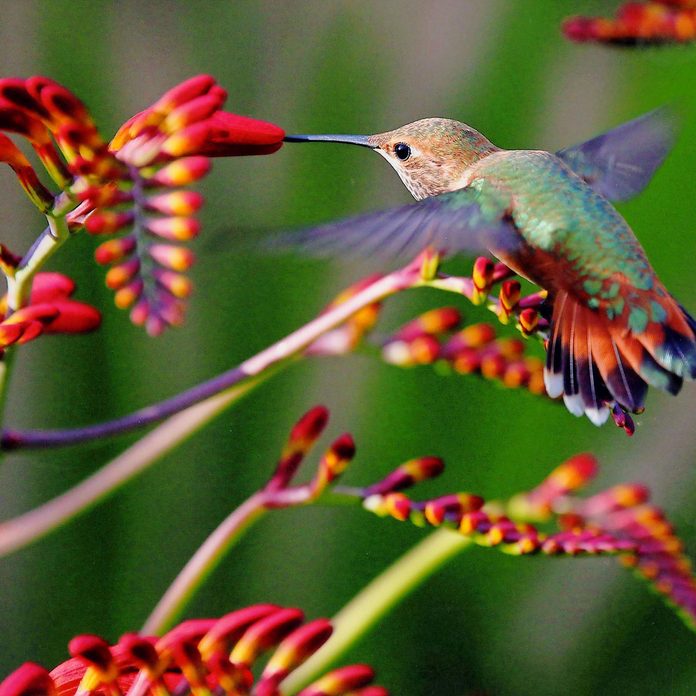
Their wings beat at incredible speed
Known for erratic movements, these agile birds beat their wings more than 50 times per second, and even faster in extreme flight mode.
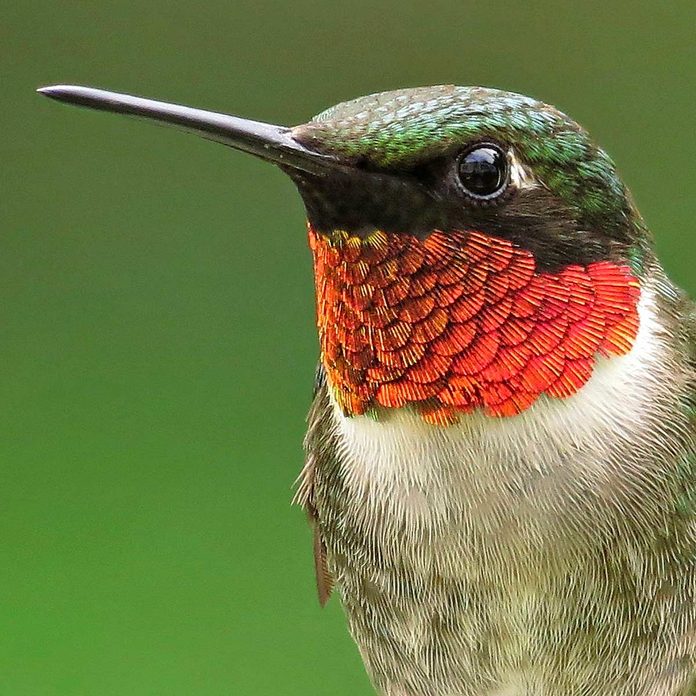
They travel alone
Hummingbirds are solitary migrants, so you won’t see them traveling in flocks. Wintering grounds vary by species, but most ruby-throats spend the cold months between southern Mexico and northern Panama. Find out where do Hummingbirds nest in winter.
Why do hummingbirds sometimes hang upside down? Find out here.
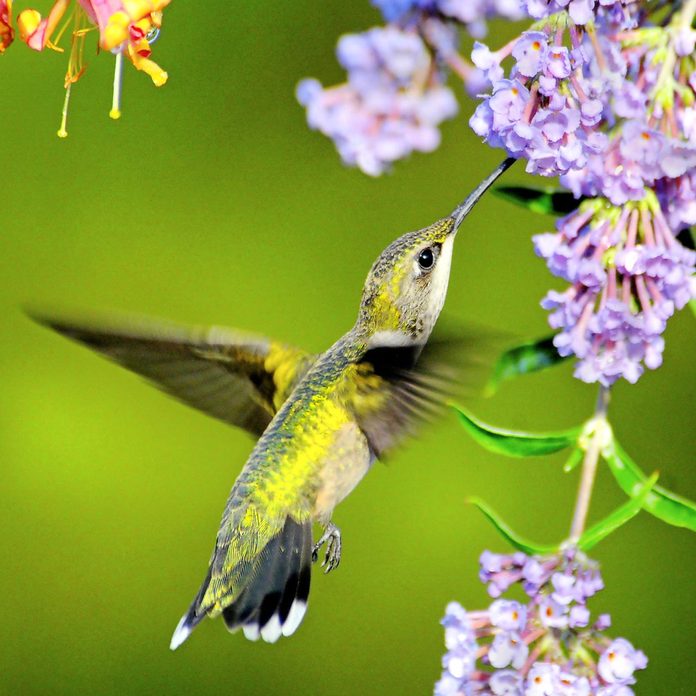
They don’t just eat nectar
You typically see hummingbirds at nectar blooms and sugar-water feeders, but they also eat tree sap and small insects when flowers are hard to find in the wild.
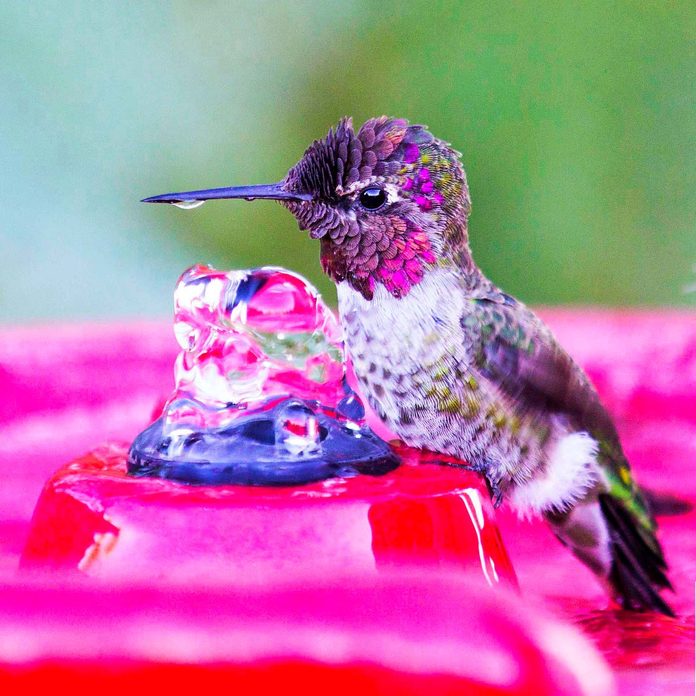
They like moving water
A birdbath with a small mister, bubbler, or sprayer attracts hummingbirds. It’s a rare sight, but they might fly through the mist of a lawn sprinklers, too!
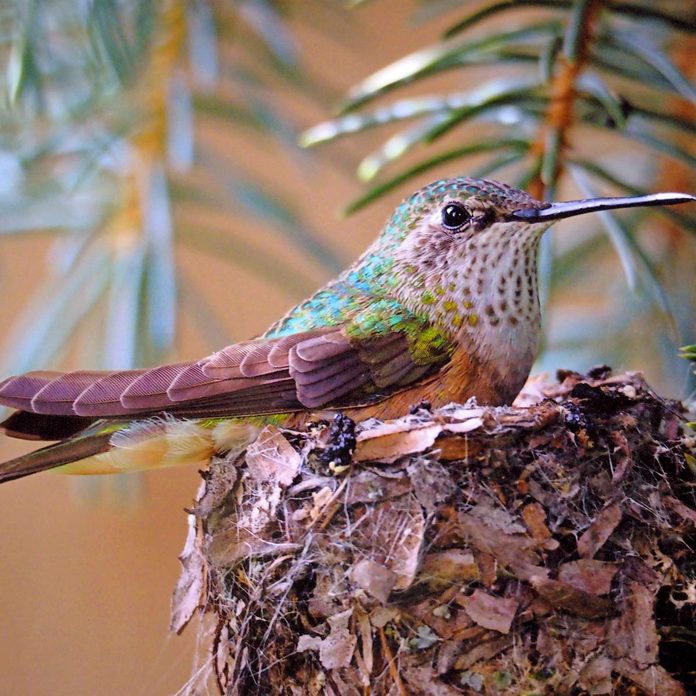
They build nests fast
It takes less than a week (about five to seven days) for a hummingbird to build its nest. Built by females only, nests are made of lichen, moss, and spiderwebs.